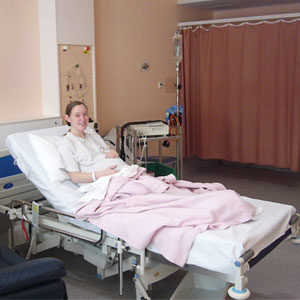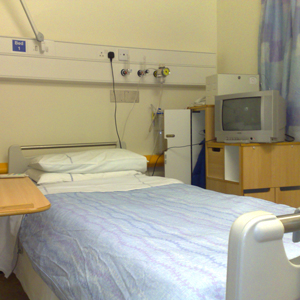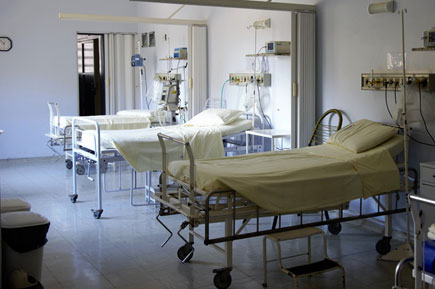Have you been to a hospital recently? Were you admitted? Maybe you were just visiting a friend or family member who fell ill or needed medical attention.
If you’re observant enough, you’ll realise that most hospitals predominantly use white bed sheets in their patient wards.
Ever wondered why?
Well, this article aims to shed some light on the reasons behind white bed linen use in hospitals.
Using White Sheets Is a Standard Hygiene Practice
Over the years, white has become the colour of choice for bedding and other garments in most hospitals in the world. The main reason behind this is hygiene.
“The very first requirement in a hospital is that it should do the sick no harm.” — Florence Nightingale
The mission of any hospital is to provide the best possible patient care. Despite being one of the most essential parts of healthcare, hospital bed linen is greatly overlooked.
The body in charge of international standards on quality and patient safety, Joint Commission International, ensures uniformity and standardisation of hospitals across the world.
It has laid down six important patient safety goals. One of the most important patient safety goals is ensuring the prevention of Hospital-Associated Infections (HAI).
HAIs are defined as any new infection in a patient who’s been in the hospital for at least 48 hours and did not come to the hospital with this particular infection.
Hospital Associated Infections are extremely violent and aggressive. They are often fatal.
According to a report by the World Health Organization, 10% of patients (1 in 10) get an infection while receiving care in a health facility.
HAIs may cause:
- Additional emotional stress to the patient.
- An increase in costs, causing a financial burden to both the patient and hospital.
- The hospital to receive a bad reputation.
Infected patients are often the sources of major hospital epidemics. These infected patients contaminate various surfaces with different pathogenic microorganisms.
Contaminated bedding is one of the sources of invisible germs and pathogens. They can cause susceptible people to become sick when exposed to them.
These infectious risks include:
- Conventional Pathogens: These are sources of disease that infect healthy individuals missing specific immunities. They include Streptococcus pyogenes, Salmonella, Hepatitis Viruses, etc.
- Conditional Pathogens: These cause diseases in newborns and individuals with a low resistance to infections. Examples include Acinetobacter baumannii, Pseudomonas aeruginosa, and Candida spp.
- Opportunistic Pathogens: These cause generalised diseases only to individuals with a low resistance to infections. Examples are atypical mycobacteria, Nocardia asteroides, and Pneumocystis carinii.
Therefore, sterile white sheets are primarily used as an infection prevention and control measure to manage and reduce the infections that may occur in the hospital. This, in turn, helps to prevent patients, staff and visitors from acquiring infections from the hospital.
Extreme measures must be taken to ensure infectious germs are not transferred to patients, residences or healthcare workers.
Additionally, White Sheets Are Faster and Easier to Clean
White sheets are used because they are the only form that can survive the vigorous cleaning and bleaching process. For sterilization purposes, they are also chemically treated at extreme temperatures.
This is because hospital bed sheets are often contaminated with blood, skin, secretions, excretions, vomitus and other bodily fluids from patients that contain infectious pathogens.
This laundering process ensures they are sterile and stain-free without having to worry about fading or any colour bleeding.
According to an article from the US National Library of Medicine, “Oxidising compounds, such as chlorine or activated oxygen bleach and temperatures of or above 60°C play a crucial role to ensure an efficient antimicrobial action of the laundering process.”
Coloured bed sheets would not survive this extreme laundering process. This makes white sheets faster and easier to clean because they do not require sorting.
White Sheets Have an Aesthetically Pleasing and Professional Look
According to the psychology of colour, certain colours have a significant impact on people’s emotions. White represents peace, comfort, purity and joy. It is for this reason why most hospitals are painted white.
 Image from: creativecommons
Image from: creativecommons
This is meant to create a tranquil aesthetic and reassure patients that it is a safe space.
Patients go to the hospital when they are in need of advanced medical treatment and care. However, they soon find out that it’s not the best environment for them to recover and heal.
The hospital environment is generally chaotic, with a lot of activity going on at the same time.
Hospital wards tend to have white or neutrally coloured linen so as not to increase the chaos and frustration. These neutral colours help patients to feel calm and relaxed.
Having a good night’s sleep is a patient’s number one expectation when admitted to any hospital.
According to a study by the International Journal for Quality in Health Care deep sleep is what helps a patient heal faster.
Using white sheets assures the patients that the bed is clean and fresh. White signifies comfort, and people tend to identify it with a good night’s sleep. White sheets also evoke a fresh hotel bed look and feel, which most people love.
There is no proven research that specifically links quality of sleep to white sheets. However, white bed sheets create a placebo effect that arouses the memory and feeling of sleeping in a bed that had crisp, clean sheets.
This can help a patient sleep better, as stated by dentist and sleep expert Dr Sabrina Magid.
Getting enough sleep boosts the immune system and fastens the patients’ recovery process. This, in turn, shortens their hospital stay and gets them back to the lives they had been missing at home.
White Sheets Signal the Bedding Needs to Be Replaced
Hospitals in the past used coloured sheets which transferred and promoted the spread of bacteria and other pathogens because it was difficult to tell if they were dirty.
Many hospitals have adopted the use of white sheets as an additional hygiene practice to ensure they are replaced with clean ones every day.
Stains are easily detectable on a white sheet, which quickly signals to the hospital staff that they need changing.
In this way, white sheets act as an early warning detection system to give the doctors more insight as to what might be affecting the patient.
For example, if there is any form of bleeding or bodily discharge from a patient, it is easily noticeable on white sheets. This will enable the doctors to take immediate action as compared to brown sheets where the stains would not be visible.
In such a scenario, white sheets are useful because they can help save a patient’s life.
Looking to Enhance Your Patients’ Hospital Stay?
Patients expect the very best during their stay in the hospital. It is, therefore, the hospital’s duty to ensure that every patient’s visit is as pleasant as possible.
 Image from: flickr
Image from: flickrLinen is one of the products that hospitals use to ensure their patients’ experience is top quality. Alsco NZ offers a wide range of luxurious, high-quality white bed sheets suitable for every type of patient.
Our sheets are made from 100% breathable cotton that is soft, comfortable, and gentle on the skin, providing a crisp cooling effect which can help patients to sleep better.
Hospitals generate a great amount of soiled linen every week. When dealing with tons of dirty sheets, towels, and patient garments each month, it makes more sense to use a specialist linen supplier.
At Alsco NZ, we have a lean system delivering what’s needed to meet the daily bedlinen requirements for your hospital.
Visit Alsco NZ today for all your bed linen needs to ensure that your patients’ healthcare experience is the best it can be.
Photo: Pexel



